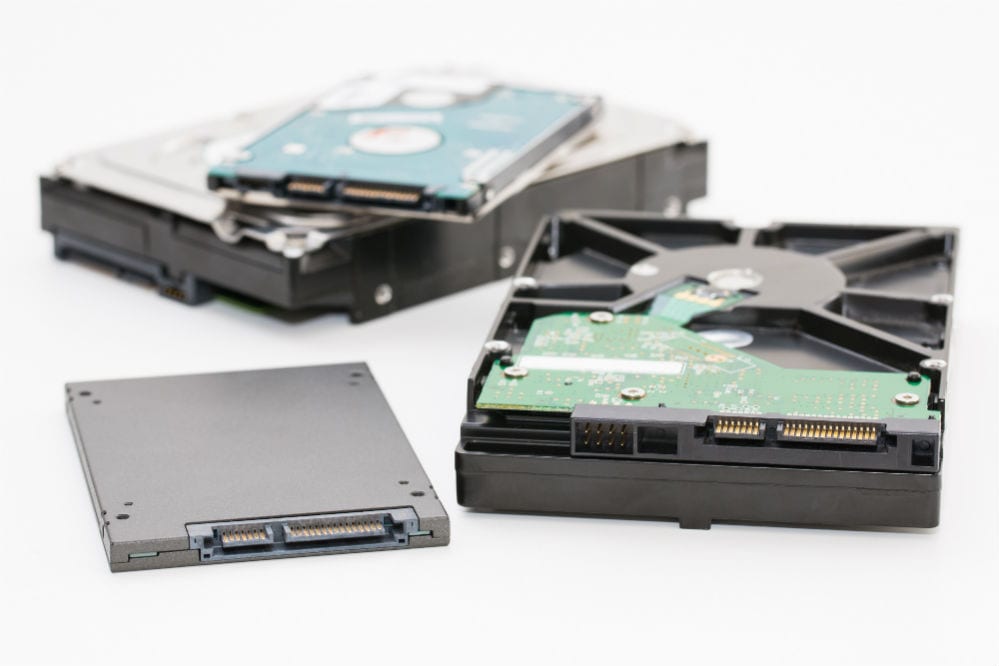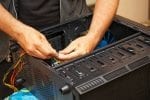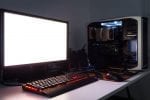In this article, we are going to go through how to set up SSD and HDD combo on Windows 10. Note that this will be a different process than if you were building or setting up a new computer. What we are talking about here is a computer that currently only has an HDD which is already in use.
Why Add an SDD
There may be several reasons why any PC user might want to add an SSD to their Windows 10 computer, but the most common reason is to speed that computer up.
The normal way software and data are reconfigured following the installation of an SSD is that the main operating system, programs and software are all held on the SSD, and files and folders which contain data, or media files (videos, music, images, documents) remain stored on the HDD.
The practical result of doing so is that with the SDD being faster and more efficient than an HDD, whenever the PC is asked to perform anything that involves its operating system (which is most things) or a piece of software is being used, it will perform any function quicker and with less delay.
Apart from the technical reasons why an SSD is quicker in this scenario, there is also the obvious matter of those files which are stored on the HDD not requiring any memory on the SSD, and thus in no way causing any delays to how it operates.
Due Diligence
Before you rush to the nearest online or offline PC hardware store to buy an SSD, you must first carry out some due diligence, to coin a legal expression. What we mean by that is that you should first make some assessment of the type of SSD you need, who might manufacture it, and any other hardware or software which might be required.
Although any newer Windows 10 PCs should be fine, not all older PCs which have upgraded to Windows 10 can have an SSD added, so you must first check for this. You might also want to check with your PC manufacturer's online support documentation and see if they have any technical advice related to installing an SSD, which is specific to the computer model you have.
Additional Hardware and Software to Consider
Hardware can include a backup HDD, and additional slots for the SSD to be housed, and the software could be cloning software so that you can easily transfer your operating system. You may also consider setting up a cloud storage account so that you can back up your files online.
You will note that the items we have just mentioned relate to backing up your computer in one way or another, and this is something which is of crucial importance. Backing up your computer is a wise move as a matter of routine, but it is even more important when you are going to undertake something major, like adding a new hard drive.
Make Sure You Back Up Your Computer
Just imagine, that you think you have successfully installed your SSD, but then you switch on your computer to find that the only thing on your PC is the BIOS and nothing else. It means something you did wiped all the data and programming from your hard drive, and without a backup, all that software you bought, your favorite games, and possibly worst of, all the irreplaceable photos and videos are gone. Not a nice feeling.
All that angst can be avoided by taking the sensible precaution of backing everything up before you start installing your SSD. There is both an online and offline way to do this. As we mentioned in the previous section you might consider cloud storage. This will store all your files online for a small fee, with the main benefit being you can access them from anywhere via an internet connection.
If you prefer to keep your files closer to home, you can save them to another HDD, assuming it has enough memory capacity to store the files that you have on your current hard drive. One point about this backup method and cloud storage is that while they allow you to back up and save files, they cannot normally be used to reboot your PC, and any programs will likely have to be reinstalled.
Preparing Your HDD
Once you have backed up your HDD, you should then run the defragmenting utility that is part of the Windows 10 system. This should make it quicker and easier to subsequently transfer files to the new SSD. With the issue of the higher cost of SSDs, it is possible that the capacity of the SSD you purchase is less than the HDD, however, it still needs to be of size capable of storing everything that you wish to transfer.
This is a common scenario given that your SSD is going to be used for programs, software and the operating systems, rather than for the storage of lots of files. Otherwise, there is little to be gained by using it in tandem with an HDD, which is where all those files should be stored.
Cloning Your HDD
The next step is to clone those files on your HDD, that you plan to store on your new SSD. This not simply a matter of copy and pasting, as that would not work in respect of Windows 10. Instead, by using cloning software you literally replicate not only the files but their installation as well.
There are several cloning software types available with the most popular or the best one, being a case of which computer magazine or review site, you look at. Our advice is that you use a paid one rather than free as they are likely to have fewer bugs, and better support if you need any help.
Final Steps
Once you have cloned your HDD, you can install your SSD, and set it up on Windows 10 so the operating system identifies it as a drive. The cloning software should allow the operating system and programs to be installed correctly, and function normally. You will need to reboot your PC in BIOS mode to alter the boot drive to be the SSD and not the HDD.
You will also want to change the default locations for files like videos, documents and music so that they save to the HDD, and not the SSD. Once this is done you can tidy up both the drives by removing files which are duplicated and only needing to be stored on one drive or the other.



